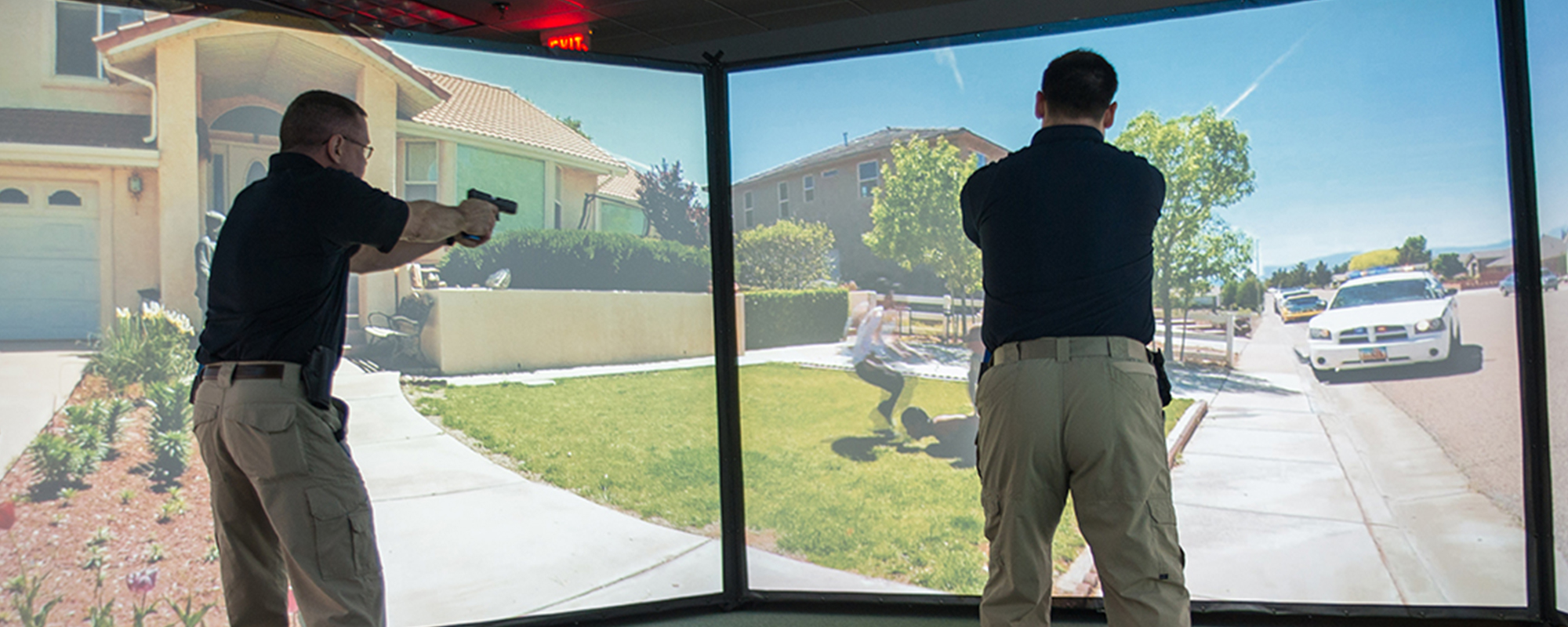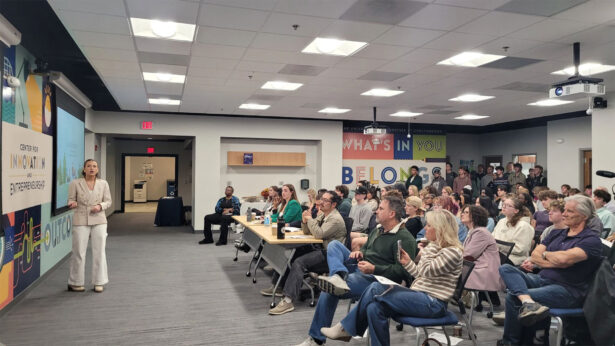By Jennifer Sicking
The gun felt heavy in my hand.
I gripped the Glock as my partner, Chris Jones, repeatedly said, “You have my back? You have my back?” But I wondered if he would have mine as gunmen began shooting at us in the mall. I fired repeatedly at one of the gunmen, missing, as he ducked behind a pillar.
“You have my back?” Jones said again.
With dread, I turned so I stood back-to-back with Jones. Another gunman jumped out. I steadied my hand and fired once, twice, three times before he fell to the floor.
With that, the simulation was over. Jones, an instructor with the UT Institute for Public Service’s Law Enforcement Innovation Center, and I walked away from the room of screens.
The simulation is offered as part of use-of-force training, which the center began offering in the spring of 2017 amid growing public debate on the appropriate use of force by law enforcement.
“This gives officers an opportunity to go through a real-life decision-making process,” says Don Green, the center’s executive director. “This gives them a chance to experience it before real life when they might either over react or under react.”
In 2016, police officers shot and killed 963 people, according to a Washington Post database. This class allows officers to practice their reactions under stress as well as reading suspects’ body language and threat cues.
Officers walk into a semicircle created by 300 degrees of screens, each 10 foot by 8 foot. Five projectors with lasers play out the scene and track officers’ responses. One of 148 scenarios plays, and the simulation begins with officers responding to traffic stops, active shooters and hostage situations. A person sitting at the computer running the simulation can change the scenario’s direction, escalating or de-escalating it depending on the officers’ verbal and physical responses.
Wearing sensors, officers who are too slow to respond to a threat of violence can feel an electrical shock if they are shot by a suspect.
Scenarios play out with multiple shooters, a single shooter and victims as part of the simulation. Officers must assess the whole situation. Were they aware of the baby in the car seat behind the man waving the gun? Were they paying attention to the traffic behind them in the alley?
The guns in the officers’ hands feel real because they are. But they have been converted to lasers. After a scenario finishes, if officers shoot, the simulation can show where their shots would have hit. How many times did they shoot at the man running with a knife toward an officer? Where did the wide shots go?
The simulation is part of an eight-hour applied de-escalation tactics class offered by the center. Several dozen officers, including new recruits from the Knox County Sheriff’s Office, have attended the training. The center also is developing additional courses that use the simulator and plan to tailor classes to meet specific law-enforcement agency needs.
With a 31-year career in law enforcement and countless interactions with the public, Green says he encountered only five or six deadly threats. While his department talked through such scenarios as part of the training, he acknowledged many police departments do not.
And that can have deadly repercussions for officers and the public.



